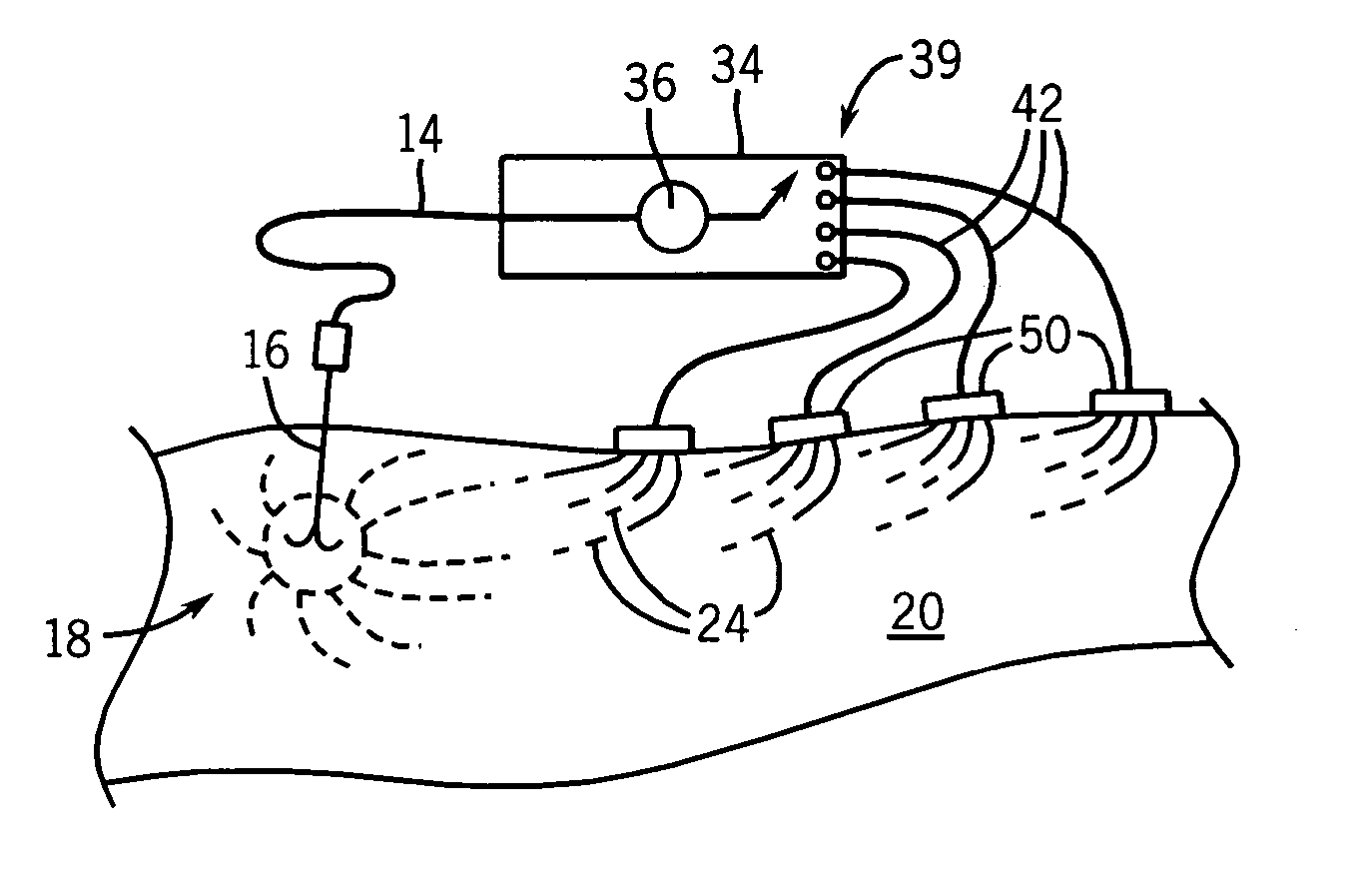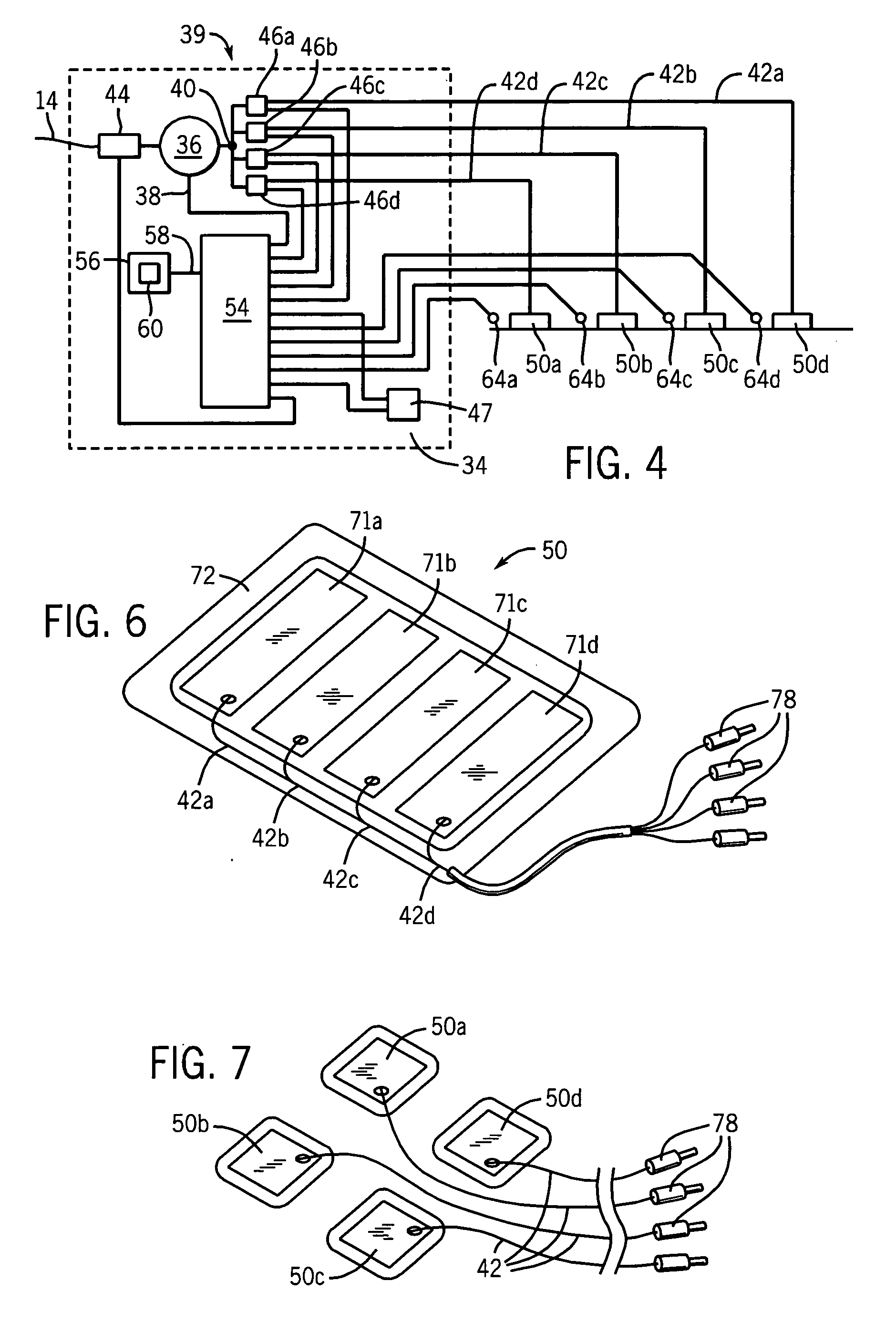Radiofrequency ablation with independently controllable ground pad conductors
a ground pad and conductor technology, applied in the field of radio frequency ablation of tumors, can solve the problems of ineffective multi-ground pads, reduced effectiveness of the area behind the leading edge, and difficulty in practice to properly locate multiple ground pads, etc., to achieve flexibly use at different power settings, reduce the maximum power output, and reduce the effect of power outpu
- Summary
- Abstract
- Description
- Claims
- Application Information
AI Technical Summary
Benefits of technology
Problems solved by technology
Method used
Image
Examples
first embodiment
[0045] Referring now to FIGS. 2 and 3, in a first embodiment, the processor 54 may sequentially activate switches 46 to provide waveforms 62a through 62d as control signals for switches 46a through 46d, so that current flows through conductors 42a through 42d during the corresponding on-times of these waveforms. These waveforms 62a through 62d switch the flow of ablation current 24 between the end 18 of the ablation electrode 16 and one ground pad 50a through 50d at a time, rotating through each of the particular ground pads 50a through 50d before returning again to repeat this rotation. As shown in FIG. 3, the current flow on-time 70 on each of the conductors 42a through 42d may, in the first case, be equal dividing the total ablation-time, power and current by the number of ground pads 50a through 50d, in this example, four. Note, that this switching between ground pads 50a through 50d nevertheless provides continuous or near continuous current flow at the ablation electrode 16 an...
second embodiment
[0047] Referring now to FIG. 4, generally a single ground pad 50a, for example, may be closer to the ablation site 22 or there may be other local variation in the site of the ground pad 50a, for example, the presence or absence of large heat dissipating blood vessels or differences in the contact resistance between the ground pad 50a and the patient 20, that affect equal sharing of power among the ground pads 50a through 50d. Accordingly, in a second embodiment, the thermocouples 64a through 64d or other similar temperature measuring component associated with each of the ground pads 50a through 50d, may provide signals used by the processor 54 to further control the power to each of the ground pads 50a through 50d.
[0048] The switching between different ground pads 50 should not produce significant stimulation of excitable tissues like nerves, muscle, and heart which can be excited by low frequency signals typically below approximately 100 kHz. To avoid excitation, the switching may...
PUM
 Login to View More
Login to View More Abstract
Description
Claims
Application Information
 Login to View More
Login to View More - R&D
- Intellectual Property
- Life Sciences
- Materials
- Tech Scout
- Unparalleled Data Quality
- Higher Quality Content
- 60% Fewer Hallucinations
Browse by: Latest US Patents, China's latest patents, Technical Efficacy Thesaurus, Application Domain, Technology Topic, Popular Technical Reports.
© 2025 PatSnap. All rights reserved.Legal|Privacy policy|Modern Slavery Act Transparency Statement|Sitemap|About US| Contact US: help@patsnap.com



